Penn College Magazine Fall 2020, Volume 29, Number 2
Tuesday, August 18, 2020
It’s two days before Christmas. Pennsylvania College of Technology’s campus is still, save for the sparks illuminating the expansive welding facility and a “once in a lifetime” project.
Inside, a handful of faculty forgo the serenity of winter break to tackle a tight deadline. On this day, like many before and after, they meticulously measure and cut a seemingly endless supply of aluminum. The resulting pieces are arranged before one of thousands of welds joins them together, forming a geometric symphony of angles. The dedicated instructors are fabricating the foundation of a dream meant to enlighten for generations.
During a 10-week window, nine welding instructors and 15 students worked a collective 3,500-plus hours and used an aluminum supply that could be stretched for nearly a mile to birth the Living Chapel. The Penn College contingent built the four walls that make up the structural framework for the modular spiritual sanctuary, unveiled in May at the Botanical Garden of Rome and online at www.livingchapel.com as part of Global Catholic Climate Movement activities, United Nations World Environment Day celebrations and the U.N. Trillion Tree Campaign.
Made from recyclable and repurposed materials and integrating art, music, architecture and nature, the Living Chapel is a sacred space that encourages acts of ecological restoration. The project is inspired by the United Nations 2030 sustainable development agenda and Pope Francis’ 2015 encyclical “Laudato Si,” the papal letter that calls safeguarding the planet an “urgent priority.”
Once COVID-19 pandemic social-distancing rules are relaxed, the Living Chapel will be placed at the Vatican before being moved to its permanent location in Assisi, Italy, the birthplace of St. Francis, whose small church provided the footprint for the Living Chapel.
“I don’t think it’s sunk in yet, what it’s going to mean to everybody,” said James N. Colton II, assistant professor of welding, who led the Penn College fabrication team. “It’s definitely a big deal.”
In the Living Chapel’s final form, more than half of the structural skeleton fabricated by Penn College is hidden. Three of the sections are covered with a mix of 3,000 evergreen leaves and flowers inserted into recycled fleece fabric stapled to PVC boards that are bolted to the aluminum walls. Most of the metal is exposed as a visual element for the fourth wall. It features discarded, small steel pans serving as “drums,” stamped steel automotive scrap repurposed into decorative metal screens, and suspended cross cutouts made of metal waste.
The section is called the “Chime Wall,” because the hung crosses chime when moved by the wind.
According to organizers, nature will engulf the senses of those who visit the open-air chapel. The swirling design of the flowers and light reflecting from the crosses will color their view. The aroma emanating from the perennials will encourage them to inhale life. Vertically stacked steel pan drums – struck by mallets powered by water – produce a natural melody that will nurture their soul. The experience should touch them spiritually and move them to join others in caring for the world.
“It’s just amazing to be like, ‘I have a couple welds on that,’” said Sara D. Stafford, a welding and fabrication engineering technology student from West Chester. “Penn College creating a huge structure and piece of art for Italy. Who would have thought?”
The four walls built by the college measure approximately 45 feet long by 30 feet wide with heights ranging between 10 and 15 feet. They are joined at various angles, with the exception of two portions that separate to form a space in the shape of a cross.
“The initial PDF that we saw didn’t show the complexity of the project,” Colton said with a smile. “We were definitely a little bit more overwhelmed once we got into it.”
The myriad pieces of aluminum that Colton and his crew connected to form the Living Chapel served as a metaphor for the disparate forces that joined to make the project a reality.
Penn College is linked with an Australian-Canadian music composer; a Toronto-based architect; faculty and students from the Department of Architecture within the Stuckeman School at Penn State; Vatican and U.N. officials; Italian landscape architects and botanists; as well as other individuals and entities.
“It’s a very multidimensional project,” said Julian Revie, creative director of the Living Chapel and associate director of music at the Center for Music and Liturgy of St. Thomas More Chapel at Yale University. “Once Penn State was involved, they told us, ‘The team to get this done is at Penn College. They have the capacity to take on something that is quite ambitious and large-scale on a tight time frame.’”
Revie, who has composed for two papal masses, presented the Vatican ecology division with an idea to employ instruments – made from recycled materials – to create a musical piece that would celebrate the “serene harmony between humanity and nature.” Those conversations led to the concept for the Living Chapel, a physical structure combining music with architecture influenced by Porziuncola, the chapel in Assisi rebuilt in the early 13th century by St. Francis, the patron saint of ecology.
“Music is ephemeral. I think the real power of this project happens in the confluence of the musical element and the physical reality, so people can come into the Living Chapel and have a holistic, all-encompassing experience,” Revie said.
To turn concept into reality, Revie contacted a former graduate-school friend from the University of Cambridge: Gillean Denny, an independent architectural designer in Toronto, who has a background in sustainable design, urban agriculture and theater production.
“I’m always looking for interesting projects, and this definitely falls in the category of interesting,” said Denny, a 2007 Penn State alumna. “Julian said, ‘We need to recreate St. Francis’ chapel but out of plants, and it needs to go together and come apart and move several times.’ The jigsaw puzzle of trying to figure out how that would work was intriguing.”
The uniqueness of the project led Denny to seek support from one of her Penn State mentors, James Kalsbeek, associate professor of architecture, who has been involved with the Department of Architecture’s study abroad program in Rome since 1991. In late summer, Kalsbeek hand-picked a small team, comprised mostly of graduate students and research assistants, to provide design support with the intent of fabricating and building the entire chapel at University Park.
“Those early sketches were a little rough,” Kalsbeek said. “I think the complexity, the design, the shadows, the layers, the metal work were not quite represented.”
The sketches morphed into a detailed, 250-page construction document that guided the work of Penn College welding faculty and students after Kalsbeek realized that Penn State didn’t possess the resources to fabricate the walls.
Penn College enjoys a long history with the architecture program at Penn State. Each year, Penn State Stuckeman School students – including Denny in 2002 – receive hands-on building experience by visiting the college’s masonry lab to cut stone and lay brick.
Kalsbeek’s request in September to extend the opportunity to Penn College’s welding and metal fabrication department was well-timed. The college recently opened its expanded 55,000-square-foot welding lab, believed to be the nation’s largest. The facility provided ample space and fabrication equipment to get the job done, such as electric cold saws, portable band saws, grinders and MIG welding units.
It was also home to the most crucial components for success: the expertise and will of welding faculty and students. They embraced what Kalsbeek called a “mammoth, gargantuan task,” despite a looming deadline.
“The faculty saw this as a huge opportunity for students and the institution,” explained Bradley M. Webb, the college’s dean of engineering technologies. “It would help students with their practical skills and, given the significance of the project, carry the Penn College name for generations. They would not let this fail.”
“It was an obvious and brilliant solution (to contact Penn College),” Denny said. “While I was waiting for him (Kalsbeek) to make that call, I was sort of crossing my fingers going, ‘Please say yes.’”
Denny got her wish after an October meeting at Penn College when the welding faculty suggested building the walls with aluminum rather than steel to cut the weight in half and eliminate the need to powder coat, a time-consuming process. That input foreshadowed the give-and-take between architect and builder throughout the ensuing weeks.
“Not only were they instrumental in actually fabricating it, but they helped us work through the design of it, to make changes, to make it easier and better to build, and stronger,” Denny said. “They were incredibly creative.”
Fabrication began in November when the first of many design modifications were sent to the college.
“It was definitely challenging because the structure was still evolving as we were fabricating it, so we would get the plans for Wall A, and while we were working on that wall, Gillean would finalize the plans for what Wall B would look like, and so on,” Colton said.
Based on Denny’s drawings, Jacob B. Holland, instructor of welding, led the effort to calculate the various lengths and angles of aluminum tubing required for each section and spent countless hours making the cuts. Colton; Cody W. Wolfe, instructor of welding; and a slew of other faculty and students applied nearly 5,000 1-inch welds to erect the structure.
“All of us had to go back and rethink about fabrication and how we fabricate things, especially in aluminum, because aluminum will move and distort,” Colton said.
The learning extended to students, who assisted with the required cutting, welding and grinding.
“It was amazing that we got our hands on it,” said Nolan Durecki, a welding and fabrication engineering technology student from South Lyon, Michigan. “I hadn’t done a whole lot of MIG welding on aluminum, so it was good hands-on learning. I like to learn by getting thrown on something and trying to figure out the best way to do it.”
“It was great to see our teachers so involved and so committed to something, because their dedication made me more dedicated to the project,” Stafford added. “They did an amazing job, and it was flattering and humbling to say that I worked with them on that.”
Because of finals and winter break, students weren’t available during some weeks, which put the pressure on faculty to meet the late-January deadline. Ten-to-12-hour workdays became the norm.
“They literally were working miracles on that campus through Christmas break and into the new year,” Denny said. “But no way, no how, did the chapel get built without them. Period. They were amazing.”
“Toward the end, we were wondering if we would make it on time,” Colton admitted. “We were still welding on pieces as they were loading the truck. There was a lot of stress released when it was gone.”
That truck delivered the walls to the Laundry Building at Penn State, where Kalsbeek’s team had spent months assisting Denny with various design aspects, focusing on the chime wall, the drums’ music function and the solar-powered irrigation system. More than 2.6 tons of water, housed in the walls’ bases, nurtures the plants and “plays” the steel drums.
Throughout the fall, Kalsbeek’s crew combed through 1,500 pounds of scrap donated by two automotive metal stamping plants to devise “framed” screen patterns to be fastened on the chime wall. They also inserted some of the 15-inch steel pan drums in the wall before all the sections were shipped by boat to Italy in early February.
The Penn State students were to assemble the Living Chapel in Rome during spring break and assist in its planned move to the Vatican in May. The COVID-19 pandemic eliminated those opportunities. A Rome-based architectural firm, Sequas, stepped in for the students, with Denny coaching them through the details of the assembly via email and Skype from Canada.
In this social-distancing time, the Living Chapel – surrounded by recycled oil barrels containing 2,500 saplings of 46 tree species from Central and Southern Europe – will remain at the Botanical Garden of Rome, waiting for its eventual move to the Vatican and Assisi.
Colton and other members of the Penn College team had planned to visit the Living Chapel in May at the Vatican. While disappointed, they are heartened that it will be assembled at the Vatican when the pandemic dissipates. They’re also honored it will be placed permanently near the grounds of the Basilica of St. Mary of the Angels in Assisi, which was built around St. Francis’ chapel. The United Nations Educational, Scientific and Cultural Organization has designated the basilica as one of about 1,100 World Heritage Sites for its universal value.
“A lot of us looked at it as a project that we wanted to do for the school and for the program. It was something neat to be a part of,” Colton said. “I don’t think it’s really sunk in until we see it up close and go, ‘Hey, we helped build that.’”
Student Assistants
Welding and fabrication engineering technology: Jeremy D. Carlson, Russell; Kyle T. Cejmer, Richmond, Michigan; Nolan Durecki, South Lyon, Michigan; Austin G. Hampton, Watsontown; Axel A. Murillo, Watsontown; Christian A. Novick, Hickory; Chad M. Phillips, Dallas; and Sara D. Stafford, West Chester
Welding technology: Jim A. Barker, Easton; Dennis E. Green, Genesee; Blake Shaw, Duncansville; Philip N. Shipe, Johnsonburg; Kyle J. Weaver, Morris; Ian M. Yon, Altoona; and Gavin W. Young, Elkton, Maryland

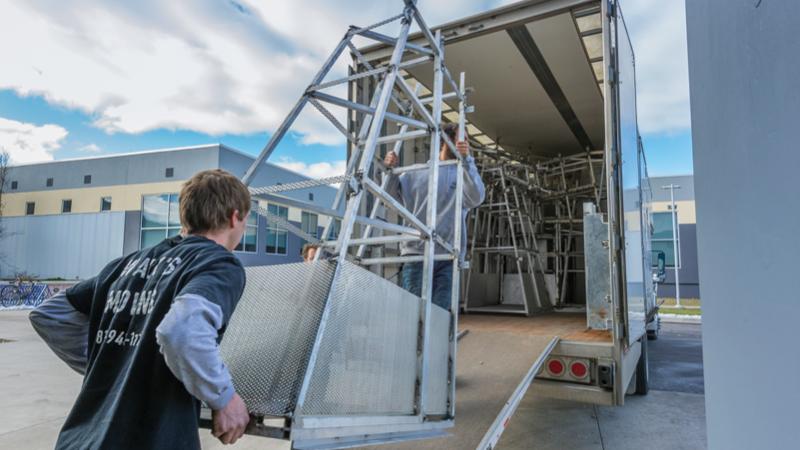
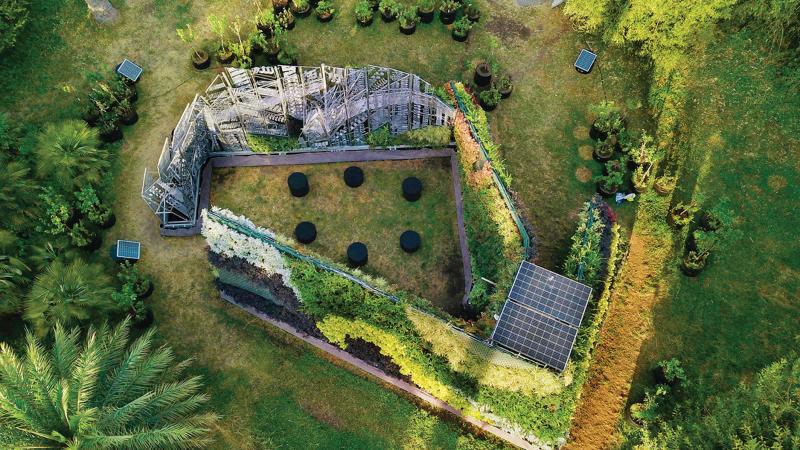
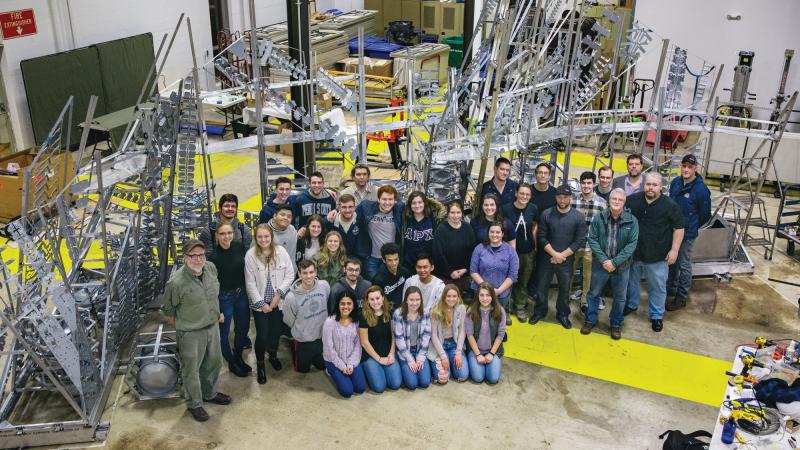
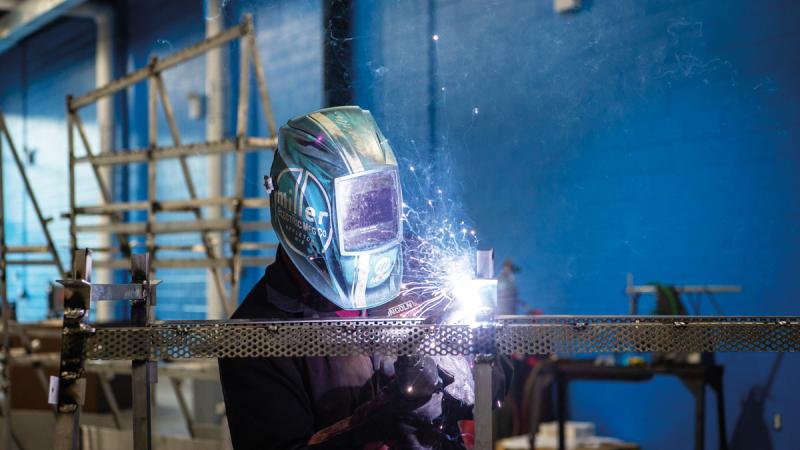
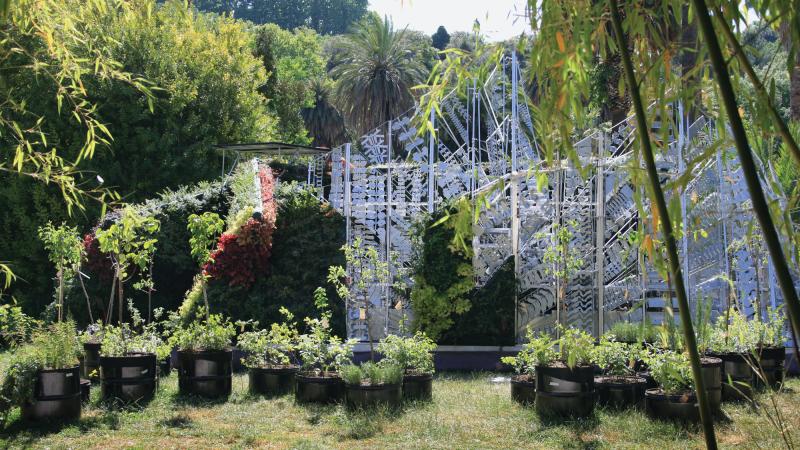
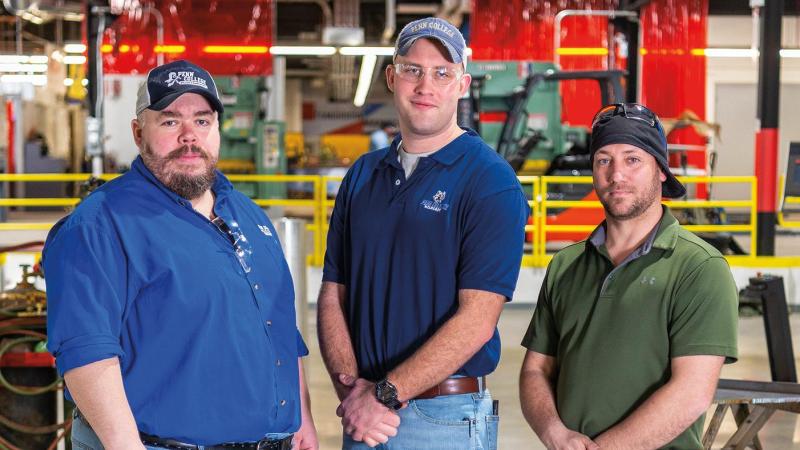
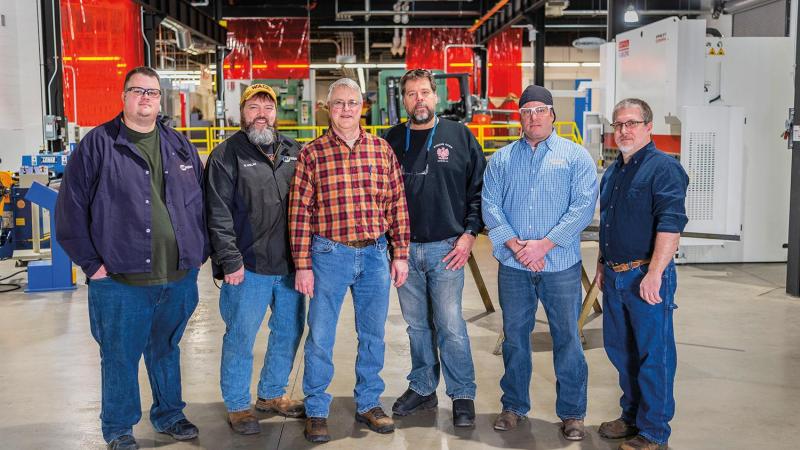
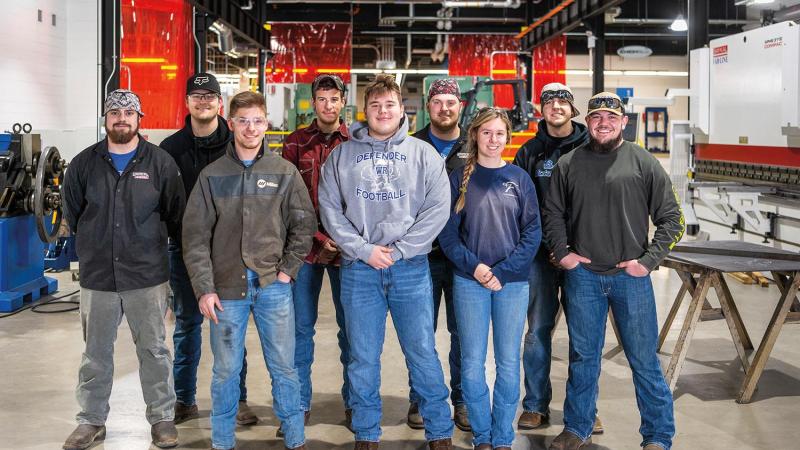
Share your comments
Penn College Magazine welcomes comments that are on topic and civil. Read our full disclaimer.
We love hearing from you